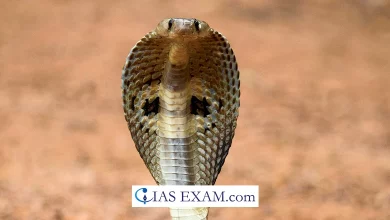Daily Current Affairs for UPSC
The State of World’s Birds
[GS Paper 3 – Conservation, Govt. Policies and Intervention]
Context – The Global bird population is steadily declining. Nearly 48 percent of existing bird species worldwide are undergoing population decline.
Only 39% of species remain stable, 6 % show increasing population trends, and 7% are still unknown.
Key Highlights of the Report
- The new review state of the World’s Birds, found that approximately 48% of existing bird species worldwide are known or suspected to be undergoing population declines.
- Global Bird population has steadily declined over the last three decades, says research.
- The continued growth of the human footprint on the natural world has led to the degradation and loss of natural habitats as well as direct overexploitation of many species are the key threat.
- Climate change is also identified as an emerging driver of bird population declines in the study, led by Manchester Metropolitan University.
- This pattern of varying responses by migratory guilds has also been observed in Europe, North America, and India, where climate change is considered to be a major driver of change.
- Long-term trends were estimated with sufficient confidence for 146 species in India, of which nearly 80 percent were found to be declining, while just 6 % had stable trajectories, and 14% of species exhibited increasing population trends.
- The study, which involved scientists from Manchester Metropolitan, Cornell University, Birdlife International, the University of Johannesburg, Pontifical Xavierian University and Nature Conservation Foundation, India, reviewed changes in avian biodiversity using data from the International Union for Conservation of Nature’s Red List to reveal the changes in fortunes of the globe’s 11,000 bird species.
About IUCN’s Red List
- The IUCN Red List of Threatened Species, is the world’s most comprehensive inventory of the global conservation status of plant and animal species.
- It uses a set of quantitative criteria to evaluate the extinction risk of species. These criteria are relevant to most species and all regions of the world.
- The IUCN Red List Categories define the extinction risk of species assessed. Nine categories extend from NE (Not Evaluated) to EX (Extinct). Critically Endangered (CR), Endangered (EN) and Vulnerable (VU) species are considered to be threatened with extinction.
- It is recognized as the most authoritative guide to the status of biological diversity. It is also a key indicator for the SDGs and Aichi Targets.





.png)



